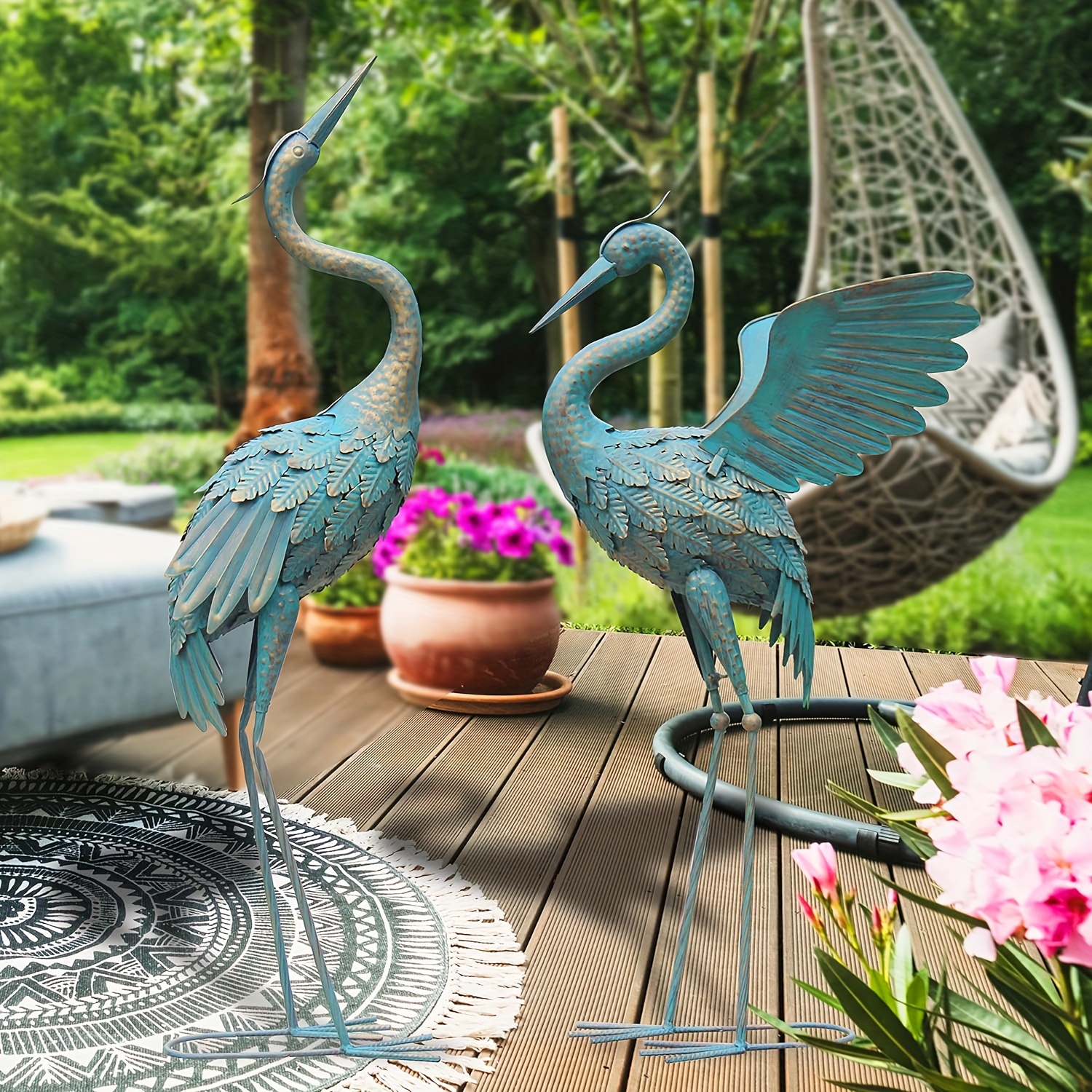

Welcome to the wonderful world of outdoor decor sculptures! If you’re looking to transform your outdoor space into a serene sanctuary or a vibrant garden, outdoor sculptures can play an essential role. In this comprehensive guide, we’ll explore various styles, materials, and tips to help you choose the perfect sculpture for your home.

What Are Outdoor Decor Sculptures?

Outdoor decor sculptures are three-dimensional artworks designed specifically for outdoor settings. They can be made from a variety of materials including metal, stone, wood, and ceramic. These sculptures not only beautify your space but also reflect your personal style and can create a focal point in your garden, patio, or yard.

Types of Outdoor Sculptures
Understanding the different types of outdoor sculptures available can help you find the perfect fit for your space. Here, we’ll delve into various categories.
1. Abstract Sculptures

Abstract sculptures are non-representational and allow for personal interpretation. They can be made from a variety of materials and can add an artistic touch to your garden.

Pros and Cons of Abstract Sculptures
| Pros | Cons |
|---|---|
| Unique and creative | May not fit traditional themes |
| Encourages personal interpretation | Can be misunderstood |
2. Figurative Sculptures
These sculptures represent real-life subjects such as animals, humans, or mythical beings. They can evoke emotions and tell stories, making them a popular choice.
Pros and Cons of Figurative Sculptures
| Pros | Cons |
|---|---|
| Easy to resonate with | Often more expensive |
| Can enhance storytelling in a garden | Limited to specific themes |
3. Kinetic Sculptures
Kinetic sculptures incorporate movement, often driven by wind or water. They add a dynamic element to your garden.
Pros and Cons of Kinetic Sculptures
| Pros | Cons |
|---|---|
| Captivating visual interest | Can require maintenance |
| Ideal for windy areas | May not fit all garden styles |
Materials Used in Outdoor Sculptures
The material of an outdoor sculpture greatly influences its style, durability, and maintenance requirements. Here’s a breakdown of common materials used:
1. Metal
Metal sculptures, often made from aluminum, steel, or bronze, are known for their durability and contemporary aesthetics. They can withstand harsh weather conditions and don’t fade easily.
2. Stone
Stone sculptures, made from materials like granite or marble, exude timeless elegance. They can become a permanent fixture in your garden but may require more effort to move.
3. Wood
Wood sculptures bring a natural warmth to outdoor spaces. However, they may require treatment to withstand the elements, as wood can rot or warp over time.
4. Ceramic
Ceramic sculptures offer vibrant colors and intricate designs. While they can be stunning, they may not be ideal for regions with extreme weather conditions.
Choosing the Right Outdoor Sculpture
Choosing an outdoor sculpture is an exciting but sometimes overwhelming task. Here are some practical tips to guide your decision:
1. Define Your Style
Your outdoor sculpture should complement your overall exterior design. Consider your home’s architecture and garden theme:
- Modern: Go for sleek, abstract designs.
- Traditional: Choose figurative or classical sculptures.
- Rustic: Look for wooden or stone pieces.
2. Consider Scale and Size
Scale is crucial. A small sculpture can get lost in a large garden, while a massive piece can overwhelm a petite space. Take measurements and visualize how the sculpture will fit into your outdoor environment.
3. Think About Placement
Where you place your sculpture matters. Consider visibility from various angles, and think about how the sunlight will interact with the material.
Maintaining Your Outdoor Sculptures
Once you’ve chosen your sculpture, it’s essential to maintain it to ensure it lasts for years. Here’s how to keep your outdoor decor looking fresh:
1. Regular Cleaning
Dust and dirt can accumulate, especially on intricate designs. Use a soft cloth and gentle cleaner to wipe down your sculpture regularly.
2. Seasonal Care
Depending on your sculpture’s material, you may need to take specific steps during seasonal transitions. For instance, metal sculptures might benefit from a rust-inhibiting spray before winter.
3. Repair and Restore
Over time, wear and tear can occur. Be proactive by repairing any chips or cracks, especially in ceramic or stone sculptures, to prevent further damage.
Inspiration for Using Outdoor Sculptures
Need some inspiration? Here are some creative ideas on how to incorporate outdoor sculptures into your landscape:
1. Garden Focal Points
Place a large sculpture at the end of a path or at a garden intersection to draw the eye and create a stunning focal point.
2. Pairing with Plants
Create contrast by placing sculptures among your plants. This can add layers and depth, making both the sculpture and the garden more visually appealing.
3. Water Features
Integrating sculptures with water features, such as fountains or ponds, can enhance the tranquil atmosphere of your outdoor space.
Frequently Asked Questions (FAQs)
1. What are the best materials for outdoor sculptures?
The best materials depend on your climate and style preference. Metal is durable and weather-resistant, while stone offers a classic look. Wooden sculptures provide warmth but may require more maintenance.
2. How can I prevent my sculptures from fading?
Position your sculptures in shaded areas or use UV-protective coatings to prevent fading and damage from sunlight.
3. Are outdoor sculptures safe for pets and children?
It’s crucial to consider safety. Choose sculptures with rounded edges and avoid sharp or heavy pieces in areas where children and pets play.
4. Can outdoor sculptures be used indoors?
Yes! Many outdoor sculptures can also serve as striking indoor decor. Just ensure they fit your interior style and space.